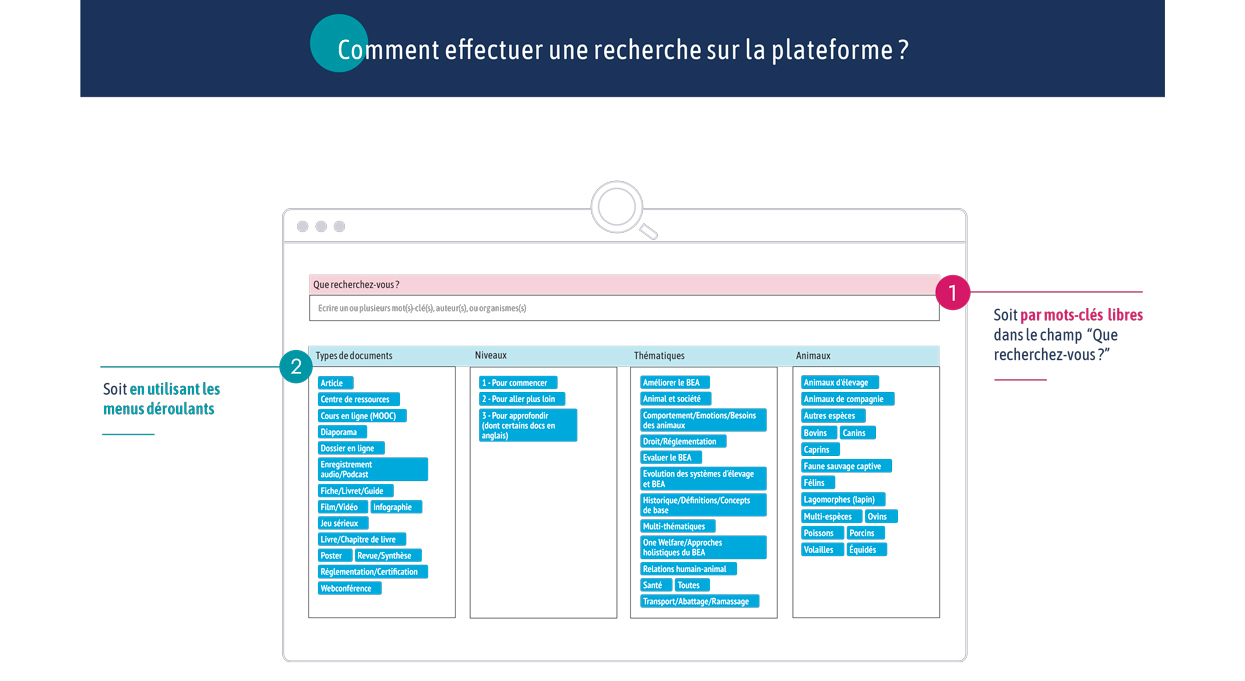Type de document : article scientifique publié dans Animals
Auteurs : Miriam Baumgartner, Theresa Boisson, Michael H. Erhard, Margit H. Zeitler-Feicht
Résumé en français (traduction) : Le fourrage est un besoin fondamental et prioritaire de tout cheval qui doit en recevoir en permanence. Afin d’assurer le bien-être comportemental, physique et mental des chevaux, toute interruption de la prise de nourriture ne doit pas durer plus de 4 heures. Cependant, ce besoin fondamental est souvent négligé dans la pratique. L’objectif de l’étude présentée était d’évaluer le bien-être des chevaux qui sont nourris de manière restrictive (non ad libitum) et gardés dans des systèmes de logement individuels. Nous avons analysé si le comportement alimentaire des chevaux nourris avec une litière comestible est différent de celui des chevaux nourris avec une litière non comestible. En pratique, les chevaux élevés individuellement étaient nourris au fourrage deux ou trois fois par jour. Nos résultats ont montré qu’avec cette pratique alimentaire restrictive, les chevaux ne pouvaient pas consommer de fourrage pendant environ 9 heures pendant la nuit. Les chevaux sur une litière non comestible ont modifié leur comportement alimentaire, c’est-à-dire qu’ils s’arrêtaient moins souvent pendant leur repas et à un moment plus tardif que les chevaux sur une litière comestible. Nous concluons que des modes d’alimentation particuliers doivent être mis en œuvre (par exemple, des systèmes d’alimentation fourragère automatisés) pour éviter toute atteinte au bien-être des chevaux s’ils sont élevés sur une litière non comestible.
Résumé en anglais (original) : It is a basic high priority need of every horse to take in roughage continuously. In order to ensure the horses’ behavioural, physical and mental welfare, any pause of feed intake should not last for more than 4 hours. However, this basic need is often neglected in practice. The aim of the presented study was to assess the welfare of horses that are fed restrictively (non ad libitum) and kept in individual housing systems. We analyzed whether the feed intake behaviour of horses on edible bedding diers from the one of horses on non-edible bedding. As a common practice, the individually stabled horses were fed roughage twice or thrice a day. Our results showed that with this restrictive feeding practice, the horses were not able to eat any roughage for approx. 9 h during the night. Horses on non-edible bedding altered their feed intake behaviour – i.e., they paused less often during their meals and at a later point in time than the horses on edible bedding. We conclude that special feeding patterns have to be implemented (e.g., automated forage feeding systems) to avoid any impairment of the horses’ welfare if kept on non-edible bedding.







